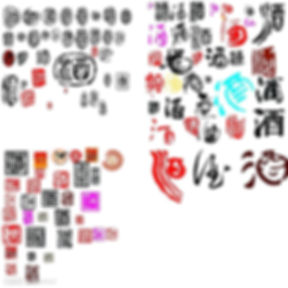From Traditionalism to Modenity 2: reflections from a Brunello tasting
Banfi Poggio Alle Mura Brunello di Montalcino DOCG 2004. $650. Deep black almandine with black reflections and cherry rim with slight hints of almandine. Corky or just funky? Quite a bit of time on mooting-well spent though. Regardless, this one gives intense, dusty, sweetish, an impression given by alcohol and with floral notes and spice that has slight brambly accents mingled with red berry fruit. Meaty. Ample palate, with fairly rich sour cherry fruit supported by graphite shaving bitterness and warm berry fruit acidity, while the tannins are fairly smooth, with some graphite shavings and bitter accents that flow into a fairly long rather butter mineral finish that leaves a dusty trail down the tongue. Regardless of potential bottle variations, there is nothing wrong with the palate; it is just not my style. The winner of the evening.
Baricci Brunello 2001. $600. Brimstone notes blow off quickly to reveal dry flowers, smooth vanilla, coffee, chocolate, toast, cherry and eucalyptus. A wine with a long, spicy finish, firmly-built body and drying tannins. A bit simple by palate: easier, plummy finish. Quietly powerful.
Dinner wines are: Chapoutier's Les Grantis Saint Joseph 2001, Poggo Antico 2003 Magnum, Gianni Brunello 2001 and Il Palazzone 2001.
Conclusion
The tasting ended up in heated discussions. Tasters found themselves drawn into camps of Traditionalist and Modernist? Tasters who straddled along the middle-of –the-roads(like ageing in both small and bigger barrels along the making) labeled themselves Revisionist. Yes, because wine tasting is a human activity, wine is politics.
HUmm, wine critics really played a part in this dichotomization. Is it easier to accord scores according to stylistics? For the wine communicators, itn’t it easier to ride on what have been documented before? Also, isn’t true that educators have got to talk about Stylistics to make the teachings easier to communicate? And do all of us practice to some extent what theorists of marketing segmentation teach us to concentrate on styles we do best so that customers can also getting the expected style without cognitive discrepancies, the so called ‘post-purchase doubts’? I truly believe in my views.
Focus in a style connotes commitment; style diversity does not. Regardless, almost all wine makers believe their wines must reflect their own tastes and identitites. Traditional maker would probably say wine making for him is not improvision. It is the work that his forefather transferred to him, so it is part of his identity. He will keep in doing what he was told and he doesn’t want to erase my roots, histooy because it identifies him. A modernist aged wines in barriques because it reflects the power of choice of each producers. The middle-of-the-roads use technology to improve the quality. Really,‘stylisctis’ do not come from a vacuum. When in Italy for most makers the making is still a practice which passes from fathers to sons and so on, the more experienced drinkers tend to skew towards the ‘traditional’ camp. But when inroads have been made by the modern, newwavers and the more academian, middle-of-the-roads so marked, the world of Italian wines appears very confusing, at least to the consumers.
Modernist and Revisionist are not classic. But what really is the problem if they all respects and work according to the DOC rules and the spirit of traditional making? It would also seem to me ‘Renaissance’ is in the blood of Italians. Would Embracing change' itself be part of the terroir of Italian wine making? It will be up to the consumer to decide on whether they are satisfied with generalization of 2 styles, or acceptance and narrow middle ground which virtually has exploded, rendering the less wine critics' work almost impossible. The true problem is: are we ready to write and taste the real thing.






















